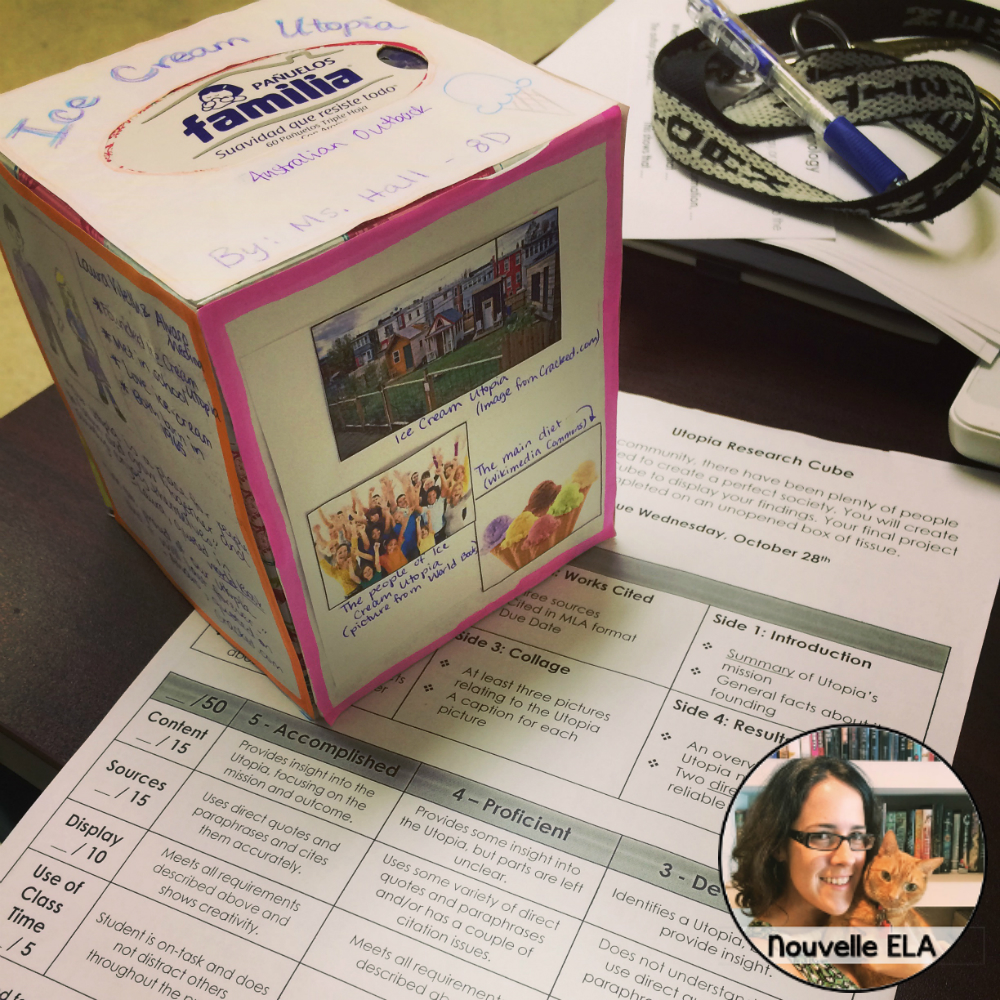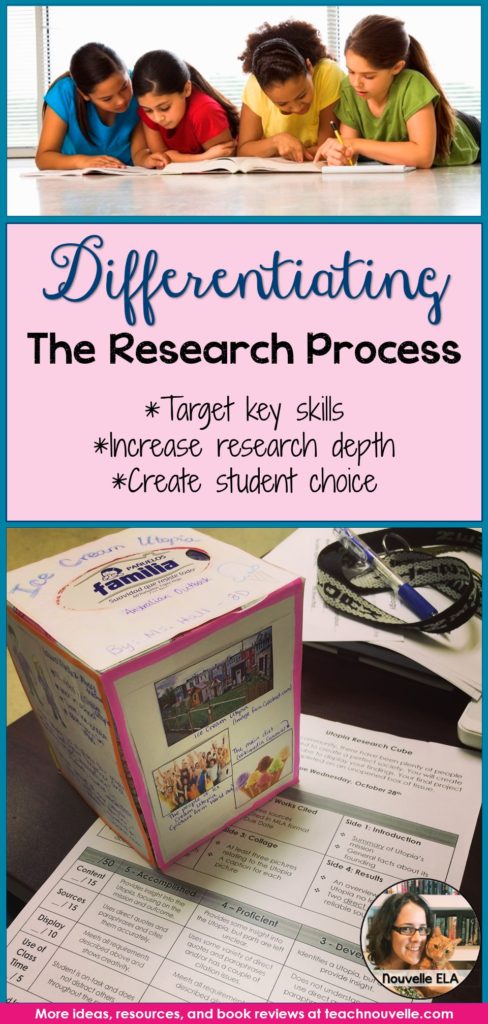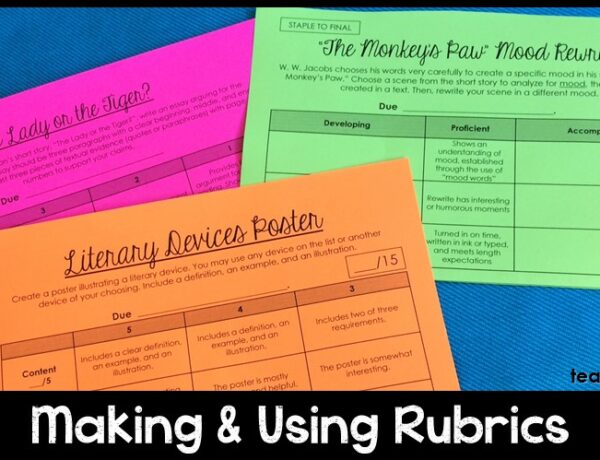If you love the idea of assigning differentiated research projects, but find the actual research process daunting, then this post is for you. Research projects can be a time of joy and exploration for your students, so here are my tips for making this something you can enjoy, too. These projects should be something open and accessible to all learners, so differentiation is really important.
Depending on the school, much of the onus of research can fall on the English teacher. Students may be required to write a certain number of pages of a research paper each year, and you may have little to no support from other departments. I certainly hope that you teach in a paradise where you do amazing cross-curricular projects. If you don’t, though, you can still incorporate meaningful research projects into your ELA classroom. Here are some of my favorite ideas.
-
Research Cubes
I like to introduce research with my 8th graders with a project that is easily accomplished and can be displayed in the classroom. We do a Research Cube early in the year with the novel The Giver. Students research a utopian community and complete a different task on each side of the cube. This is a differentiated research project because students can write or draw as much or as little as they want on each side of the cube, as long as they accomplish the given task. These tasks are straightforward, such as “include one direct quote and citation”.
-
Research Portfolios
The easiest differentiated research project is, by far, a research portfolio. You can give students a choice of a wide range of topics and ask them to complete a certain number of short tasks. You can assign a different number of tasks according to the level of each student.
I do this project on Careers in a regular classroom (including ESL and SPED learners). Everyone chooses a career and completes two common mini-projects: an overview booklet and a resume for their choice topic. Then, I students choose 2, 3, or 4 additional mini-projects to complete based on their level. All students have a rich and varied portfolio at the end.
-
Research Speeches
I love giving my students opportunities to practice public speaking, so we always do a research speech. This is generally a 2-3 minute speech on any topic they want, as long as they have research to support their claims. This is a great opportunity for differentiation because you give students a lot of choice in how to proceed. Additionally, you can scaffold their process. I allow any students who want to to “just get started”, and provide mini-lessons and conferencing to help the rest. We brainstorm topics and talk about incorporating sources in a speech. Secondary Sara has some brilliant short research projects in her TpT store, and I’ve used those in both standard and advanced classes.
Final Thoughts for Differentiated Research Projects
The key to differentiated research projects, of course, is student choice. If you can design a good rubric (more about that in this post), you can grade all students fairly, based on what they are able to complete.








No Comments